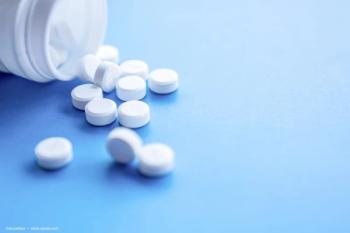
Risuteganib: Exploring novel dry AMD treatment
With the development of risuteganib, a treatment for dry AMD may be on the horizon.
This article was reviewed by David S. Boyer, MD
The development of risuteganib (Luminate, Allegro Ophthalmics) may help to fill a void that has been open for a long time. Though dry
“The pathogenesis of dry
Risuteganib-a small, synthetic, arginine-glycine-aspartate class peptide with a molecular weight of 0.75 kD and a retinal half-life of 21 days-is designed to regulate integrin functions, he explained.
Related:
A number of preclinical studies of the molecule have been conducted in the United States and Mexico have confirmed the drug’s anti-inflammatory component via the C3 receptor, reduced mitochondrial reactive oxygen species, and improved mitochondrial bioenergetics and cellular viability, according to Dr. Boyer.
The activity of risuteganib blocks oxidative stress in RPE cells and through that action ultimately eliminates photoreceptor and RPE degeneration and inflammation.
“Because of this, it is a natural to look at this drug for the treatment of dry
Related:
Clinical study
The safety and efficacy of 1.0 mg of risuteganib intravitreal injections was evaluated in a study population with intermediate non-exudative AMD.
The primary endpoint was the percentage of patients that gained eight or more letters of best-corrected visual acuity (BCVA) compared with sham treatment. That particular endpoint was chosen because more than a five letter gain is considered a real clinical change in dry
“A gain of eight letters would be considered substantial,” Dr. Boyer noted.
Patients were included in the study who had dry
Patients had to have a combination of RPE disturbances and/or one or more large drusen greater than 125 μm and/or multiple intermediate drusen in the range of 62 to 124 μm in the macula. Other criteria were preserved areas of RPE and defined RPE and an outer segment ellipsoid line seen on optical coherence tomography within the central 1 mm of the macular.
Related:
The double-masked sham-controlled study was conducted at six sites in the United States, with 25 patients (16 women) were treated with risuteganib 1.0 mg and 14 (11 women) sham-treated at baseline.
Most patients were Caucasian; the mean age in the sham group was 78.8 years and in the treatment group 75.9 years. The BCVA and the low-luminance BCVA were well matched in both groups. The readout was set for 12 weeks after treatment, but at 16 weeks each group received one additional injection. In the patients who received active treatment, the readout was baseline to 12 weeks versus the readout from baseline to 28 weeks, Dr. Boyer described.
Related:
Results
“The results showed that the primary endpoint, was met by risuteganib in 48.0% of patients from baseline to week 28 compared with 7.1% in the sham group from baseline to week 12, a difference that reached significance (p = 0.013),” according to Dr. Boyer.
The secondary endpoint, the proportion of patients with an eight or more gain in letters from baseline at crossover at week 16, showed that the percentage of sham-treated patients who met that target was double that, 14.3%, compared with 7.1% from baseline to week 12. In the active-treatment group, 20% of patients met the endpoint from baseline to week 12. That increased to 48.0% from baseline to week 128.
A subgroup of patients, eight (32.0%) of 25, in the active-treatment group gained 10 or more letters, and five (20.0%) of 25 gained 15 or more letters. In the sham-treated group, 1 (7.1%) of 14 patients achieved a 10 or higher gain in letters, and none gained 15 or more letters.
Related:
A comparison of a sham case with an active-treatment case was interesting. The former gained 6 letters of vision from baseline to week 12. However, the microperimetry deteriorated. In contrast, active treatment results in an increase of nine letters but an improvement in microperimetry was evident.
Dr. Boyer said risuteganib is a small synthetic peptide that regulates integrin functions involved in the pathogenesis of dry
“When compared to sham treatment, risuteganib met the primary study endpoint of the proportion of patients who gain eight or more letters of vision,” he concluded. “The phase II study also showed that drug had a good safety profile. An additional 1,200 injections administered outside of the study also were associated with an acceptable safety profile.”
A larger trial is planned to confirm the currently described results.
David S. Boyer, MD
E: [email protected]
Dr. Boyer is a consultant to Allegro Ophthalmics and has an equity interest in the company.
Newsletter
Don’t miss out—get Ophthalmology Times updates on the latest clinical advancements and expert interviews, straight to your inbox.
















































.png)


